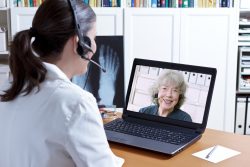With the opening of its new 24/7 Center for Connected Care, Penn Medicine now operates one of the larges telehealth hubs in the U.S. In addition to virtual urgent care services, the system houses Penn Medicine’s 15-year-old e-ICU, and a service that focuses on patients with chronic illness. It has 50 full-time employees. The move reflects growing use of virtual care across the country, as confirmed by data from Sage Growth Partners revealing that 56% …
Read More









